
|
Astronomy Picture Of the Day (APOD)
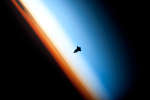 Dark Shuttle Approaching
Dark Shuttle Approaching
16.02.2010
What's that approaching? Astronauts on board the International Space Station first saw it far in the distance. Soon it enlarged to become a dark silhouette. As it came even closer, the silhouette appeared to be a spaceship.
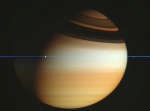 Cassini Spacecraft Crosses Saturn's Ring Plane
Cassini Spacecraft Crosses Saturn's Ring Plane
15.02.2010
If this is Saturn, where are the rings? When Saturn's "appendages" disappeared in 1612, Galileo did not understand why. Later that century, it became understood that Saturn's unusual protrusions were rings and that when the Earth crosses the ring plane, the edge-on rings will appear to disappear.
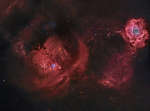 Field of Rosette
Field of Rosette
14.02.2010
What surrounds the florid Rosette nebula? To better picture this area of the sky, the famous flowery emission nebula on the far right has been captured recently in a deep and dramatic wide field image that features several other sky highlights.
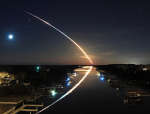 Waterway to Orbit
Waterway to Orbit
13.02.2010
The 32nd shuttle mission to the International Space Station, STS-130, left planet Earth on February 8. Its early morning launch to orbit from Kennedy Space Center's pad 39A followed the long, graceful, eastward arc seen in this 2 minute time exposure.
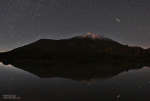 Teide Sky Trails
Teide Sky Trails
12.02.2010
The snow capped Teide volcano is reflected in a pool of water in this nearly symmetric night sky view from the Canary Island Tenerife. Bright north star Polaris stands above the peak in an exposure that also captures the brilliant trail of a polar orbiting Iridium satellite.
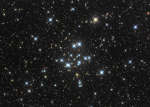 Star Cluster M34
Star Cluster M34
11.02.2010
This pretty open cluster of stars, M34, is about the size of the Full Moon on the sky. Easy to appreciate in small telescopes, it lies some 1,800 light-years away in the constellation Perseus. At that distance, M34 physically spans about 15 light-years.
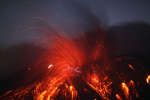 Sakurajima Volcano with Lightning
Sakurajima Volcano with Lightning
10.02.2010
Why does a volcanic eruption sometimes create lightning? Pictured above, the Sakurajima volcano in southern Japan was caught erupting early last month. Magma bubbles so hot they glow shoot away as liquid rock bursts through the Earth's surface from below.
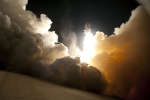 Night Launch of the Space Shuttle Endeavour
Night Launch of the Space Shuttle Endeavour
9.02.2010
Sometimes, the space shuttle launches at night. Pictured above, the space shuttle Endeavour lifted off in yesterday's early morning hours from Launch Pad 39A in Kennedy Space Center, Florida, USA, bound for the International Space Station (ISS).
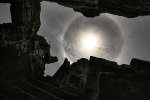 A Sun Halo Over Cambodia
A Sun Halo Over Cambodia
8.02.2010
Have you ever seen a halo around the Sun? This fairly common sight occurs when high thin clouds containing millions of tiny ice crystals cover much of the sky. Each ice crystal acts like a miniature lens.
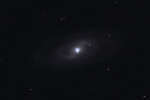 The Einstein Cross Gravitational Lens
The Einstein Cross Gravitational Lens
7.02.2010
Most galaxies have a single nucleus -- does this galaxy have four? The strange answer leads astronomers to conclude that the nucleus of the surrounding galaxy is not even visible in this image. The central cloverleaf is rather light emitted from a background quasar.
|
January February March April May June July August September October November December |
|||||||||||||||||||||||||||||||||||||||||||||||||